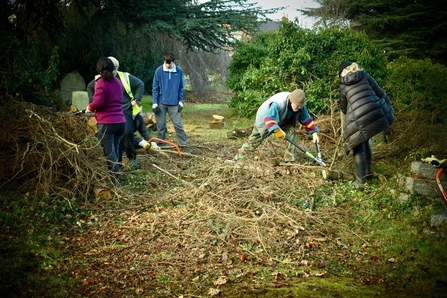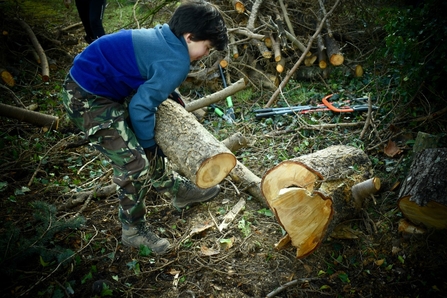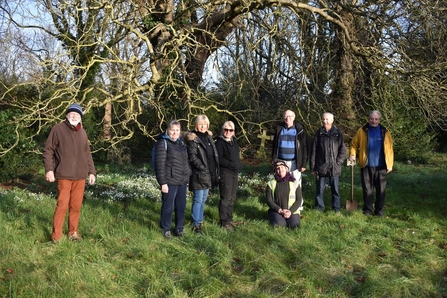
Team Wilder story: Bringing Reading Old Cemetery back to life

Imagine a wilder world on your doorstep, with more nature everywhere, for everyone, in urban and rural areas. That’s why the Friends of Reading Old Cemetery are working to make more space for nature and people at this site on the edge of Reading town centre.
Tucked between the A4 and A329, Reading Old Cemetery was established in the early 1840s as one of the first garden cemeteries in England. It’s now a vital green space in an urban area dominated by rows of terraced housing.
The Friends of Reading Old Cemetery, led by Teresa Verney-Brookes, is a group of local volunteers who have been looking after the site for ten years in collaboration with Reading Borough Council.
Since 2013 they have also been part of Econet, a wildlife conservation group that undertakes a wide range of activities relating to the conservation of the natural environment in public open spaces and other sites in and around Reading, who collectively have been providing opportunities for local people to participate in the management of Reading's green spaces for more than twenty five years.

Volunteers clearing vegetation at Reading Old Cemetery. Photo by Leslee Baron
The cemetery is designated a Local Wildlife Site and is a vital space for both wildlife and people in this busy urban area.
Access to nature can help improve people’s physical and mental wellbeing so it’s important that green spaces are accessible and welcoming to visitors to make the most of this natural resource.
As a garden cemetery, the space was designed to encourage people to come in, walk around or sit and enjoy the tranquility and the group are keen that local people make the most of this space today.
To encourage more people to visit the cemetery the Friends of Reading Old Cemetery are opening up some of the overgrown pathways to improve sightlines and help people feel safe in the area. They also run community events and guided walks to help people discover what’s on their doorstep.

Volunteers holding a community event at Reading Old Cemetery. Photo by Leslee Baron
The group’s long-term vision, alongside improving the site for wildlife, is for a wider variety of people to use the site, people of different ages and backgrounds, and for schools to use it as an outdoor classroom space.
During the restrictions of the pandemic they found that more local people discovered the area as a quieter area to connect with nature and take their daily exercise, and more people got involved with the Friends of group, including younger members which has been great to see. Some people are now carrying out litter picks on site and there’s a growing sense of pride in this special place on their doorstep.

All ages get involved at Reading Old Cemetery. Photo by Leslee Baron
In terms of improving the space for wildlife, the group is keen to show that areas of grassland, like at this site, are just as important for wildlife as woodlands and other habitats that are traditionally thought of as wildlife-rich.
In fact, 3% of lowland grassland meadows are within church land and so caring properly for them can make a big difference to wildlife.
One of the best ways to manage grassland for wildlife is to cut it less frequently so it’s important to have information on the site explaining this to people and get past the view that longer grass is ‘untidy’.
The group hope in time to have new interpretation which will help visitors to understand how they are looking after it and why the cemetery is an important space for local wildlife.
The Friends of Reading Old Cemetery group is a fantastic example of a local group caring for a vital green space in a busy urban area, improving it for both wildlife and people.

The volunteers at Reading Old Cemetery. Photo by Leslee Baron
What you can do
- If you’d like to get involved with the Friends of Reading Old Cemetery group, contact them via their Facebook group or Econet.
- If you’re doing something similar for local wildlife near you, add your piece of the jigsaw to our map.
- If you’d like to connect with other community groups to network, share resources and tips, join our community group network. The network meets monthly on Zoom and has a Facebook group for connecting and inspiring each other.
- If you’d like help to start something similar in your area, contact us via teamwilder@bbowt.org.uk
- Find out more about why church yards are important spaces for wildlife and how you can improve one near you: Caring For God's Acre – Protecting Wildlife, Preserving Heritage, Involving People

